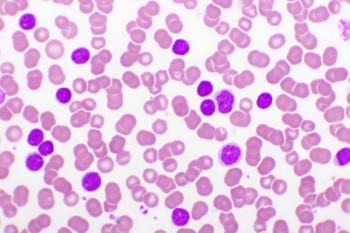
Treadmill Training Beneficial for Patients With Parkinson Disease
This review sought to give more information about the types of treadmill training that might be beneficial for patients with Parkinson disease and other neurological disorders engaged in physical rehabilitation programs.
Treadmill training, or TT, is a widely accepted method of gait training in patients who need physical rehabilitation, as it promotes improved walking, balance, and stability, thereby preventing falls and other accidents. However, not much has been known about how it changes the gait of patients with neurological disorders, including
TT assists physical therapists with guiding the proper movement and timing of the legs to stimulate a more typical walking pattern without any compensatory movements or adjustments. But it can be difficult for providers to choose the most optimal treatment plan for their patients.
A recent review sought to summarize the latest evidence on the effectiveness of this technique through a systematic review and meta-analysis.
The aim of the report, published in
The review, which initially cast a wide net over numerous neurological conditions, found that the 2 main disorders with the most evidence for TT were PD and stroke rehabilitation.
Researchers searched for keywords in studies published in English in PubMed, CINAHL, Scopus, and Web of Science from January 2000 to December 2021 that were randomized controlled trials of these interventions in adults 55 years and older with a neurological disorder. The studies included spatiotemporal gait characteristics and included stride length, stride time, step length, step width, step time, stance time, swing time, single support time, double support time, or cadence.
After initially retrieving 1792 records, the authors included 32 studies; of those, 19 studies included adults with stroke and 13 studies included adults with PD. Twenty-two of 32 studies examined gait in adults with neurological disorders.
Treadmill interventions included:
- TT with sensory feedback
- Bodyweight-support TT
- TT on an inclined surface
- Pure TT on spatiotemporal gait characteristics
Results were analyzed by random plot analysis if heterogeneity was greater than 50% (as denoted by I2); otherwise, researchers used fixed plot analysis. In addition, all analyses used effect sizes and standard errors, and a P < 0.05 threshold was considered statistically significant.
In adults with PD, 2 types of TT had the greatest effect: TT with sensory feedback or TT with bodyweight support. They had the largest impact on cadence, stride length (z = 2.73; I2 = 74.2%), and step length (z = −2.54; I2 = 96.8%), the authors wrote.
In adults with stroke, pure TT and TT with visual cues or incline had the largest effect on step length (z = 2.25; I2 = 74.3%), stride length (z = 6.08), and cadence (z = 6.24; I2 = 11.5%).
Overall, TT interventions had the largest effect on cadence, step length, and stride length among adults with stroke and PD.
The study had some limitations. The researchers were unable to determine the effect of all interventions across a wider range of neurological disorders due to a lack of studies, and the small number of studies limited the ability to detect bias. Larger sample sizes with more neurodiverse populations would be beneficial to examine the effects of using TT, the researchers said.
However, they said their findings will help providers choose the most specific intervention based on the specific needs of patients with either PD or stroke.
Reference
Bishnoi A, Lee R, Hu Y, Mahoney JR, Hernandez ME. Effect of treadmill training interventions on spatiotemporal gait parameters in older adults with neurological disorders: systematic review and meta-analysis of randomized controlled trials. Int J Environ Res Public Health. Published online February 28, 2022. doi:10.3390/ijerph19052824
Newsletter
Stay ahead of policy, cost, and value—subscribe to AJMC for expert insights at the intersection of clinical care and health economics.












































